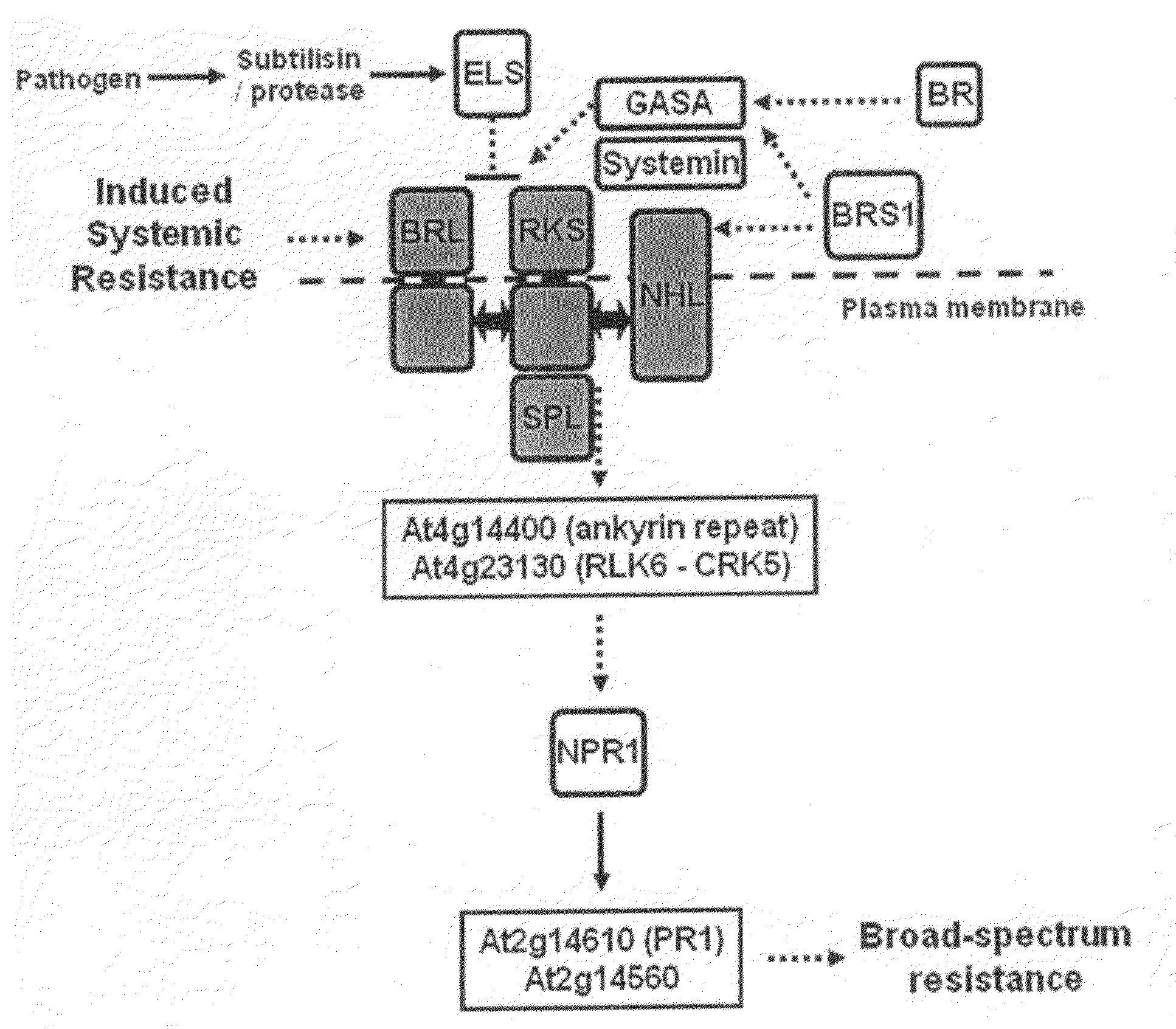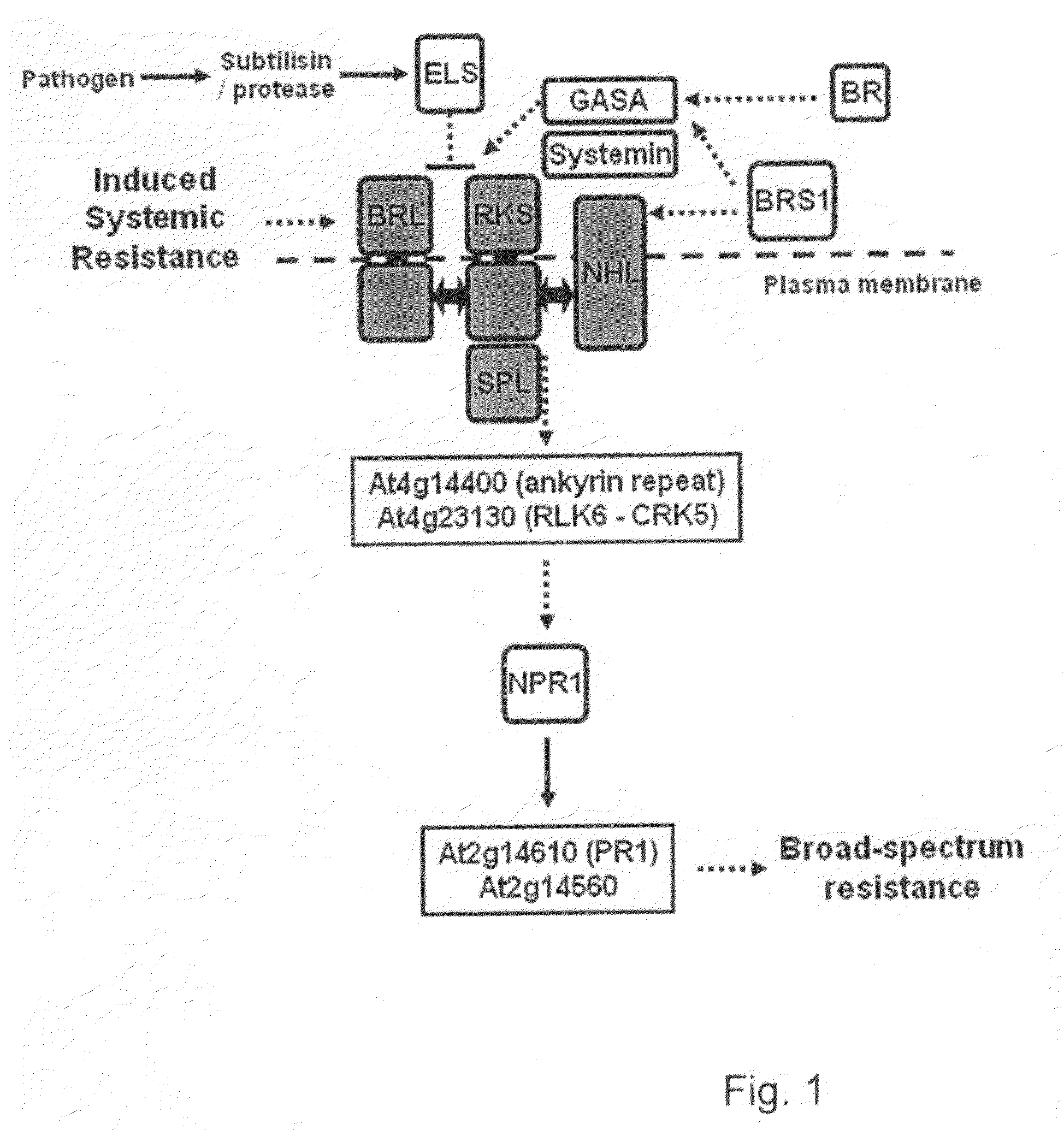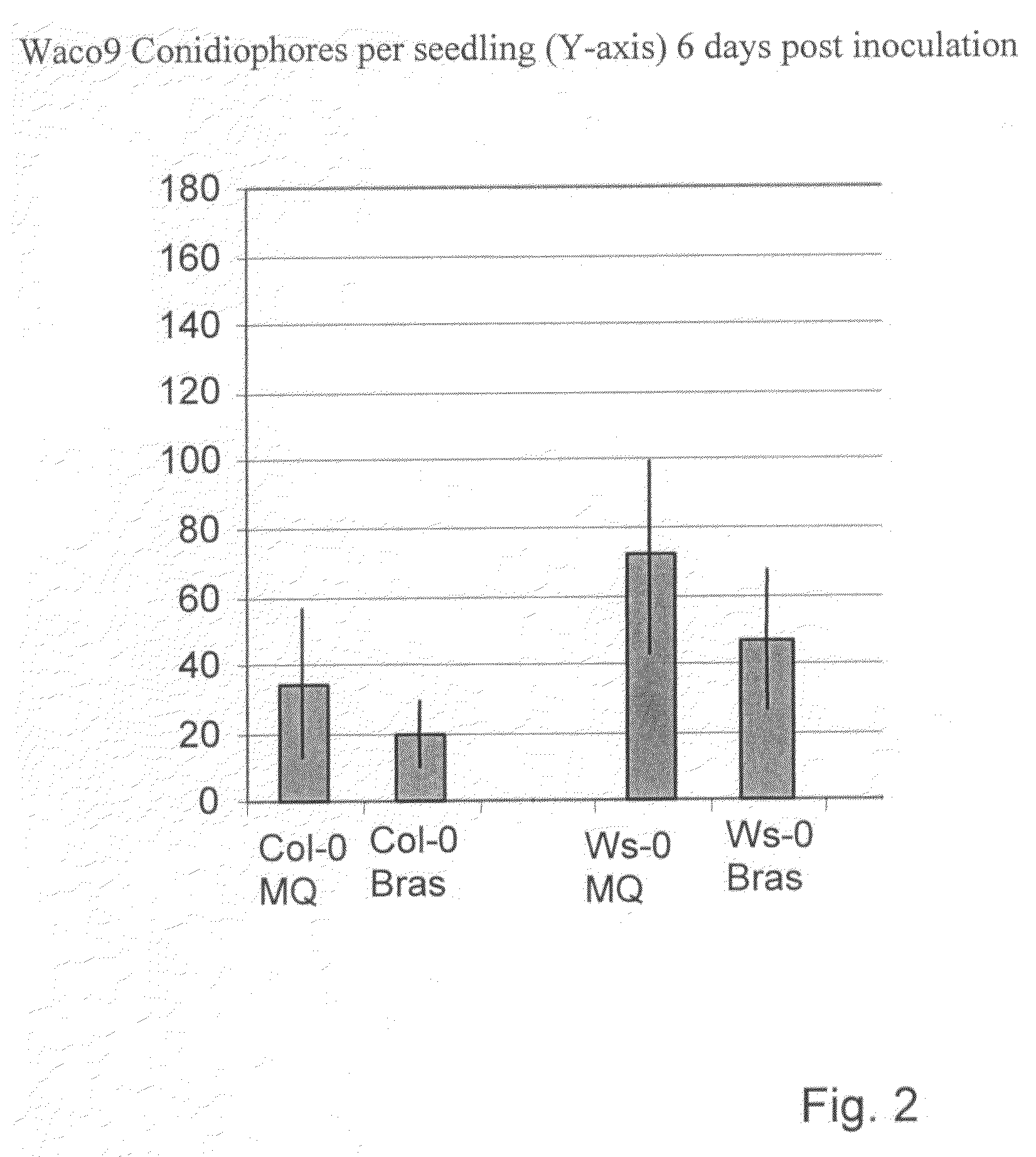Novel method to increase pathogen resistance in plants
a plant resistance and induced resistance technology, applied in the field of plant diseases, can solve the problems of gasa interference with brassinosteroid signal perception, unfavorable optimal disease resistance, and constant overstimulation of this resistance level, so as to increase the amount of warning signal receptors, increase the sensitivity of plants to induced resistance, and improve the effect of perception
- Summary
- Abstract
- Description
- Claims
- Application Information
AI Technical Summary
Benefits of technology
Problems solved by technology
Method used
Image
Examples
example 1
Cloning Strategies
[0104]Production and expression of receptors is performed for example through the gateway cloning system as defined in (http: / / www.psb.rug.ac.be / gateway / ). Overexpression constructs are made by the cloning of full length cDNA clones obtained from SALK RIKEN or elsewhere as indicated by the Arabidopsis gene—mapping tool (http: / / signal.salk.edu / cgi-bin / tdnaexpress), e.g. by recombination cloning using vector sequences (M13 forward and reverse or T7 and SP6 / T3 primers) and e.g. fusing them to the B1 and B2 recombination sites as used in the gateway cloning technology. Recombination into ectopic binary expression vectors is e.g. performed by gateway recombination. PCR amplification of the expression cassettes alone and subsequent particle bombardment using e.g. the T / R marker free transformation technology (WO 01 / 29240) might subsequently be performed for routine transformation of plant species with the desired gene product. A specific inducible system for expression m...
example 2
Application of Brassinosteroids Induces Resistance in Plants
[0105]Two Arabidopsis lines were used for the experiment; Ws-0, and Col-0. Nine-day old seedlings were sprayed with mock-Silwet L-77 (0.01%) or brassinosteroids (+0.01% Silwet L-77) After drying, the plants were incubated in the long day growth chamber (MPMI 2005, 18, 583-592). After two days half of the plants were sprayed on their leaves with Waco9 (50 spores / μL), a strain of Peronospora parasitica MPMI 2005, 18, 583-592). Seven days post inoculation. the plants (40 seedlings per line) were scored for sporulation. The mock was used as a control. Experimental infections and analyses were performed as previously described (MPMI 2005, 18, 583-592).
Results (see FIG. 2 and Table 1) showed that, two days after spraying the mock and, Brassinosteroid mix, the plants sprayed with brassinosteroids were elongated but after six days they looked almost the same as the mock, only treated with 0.01% Silwett-L77 in water (just slightly m...
example 3
RKS Receptors Mediate the Brassinosteroid Perception
[0106]Overexpression of RKS genes results in modified responses towards different concentrations of brassinosteroids in a root response bioassay (Cell 2002, 110 203-112 & 213-222). FIG. 3 shows that both RKS10-OX and RKS4-OX lines show an increased sensitivity to different concentrations of brassinosteroids. Knock out lines of RKS4, a gene which, in the root, is specifically expressed in the meristem initials of the stele and in provascular tissue, show on the other hand a strong decrease in brassinosteroid sensitivity as illustrated by longer roots at high concentration. This not only indicates that RKS4 is an important regulatory molecule during root growth, but that it also acts through Brassinosteroid signalling. RKS4 controls both the cell elongation and the cellular division rate in several plant organs (see FIG. 8). Its restricted expression in meristematic cells indicates an important function for the RKS4 gene product in g...
PUM
| Property | Measurement | Unit |
|---|---|---|
| Electrical resistance | aaaaa | aaaaa |
| Sensitivity | aaaaa | aaaaa |
Abstract
Description
Claims
Application Information
 Login to View More
Login to View More - R&D
- Intellectual Property
- Life Sciences
- Materials
- Tech Scout
- Unparalleled Data Quality
- Higher Quality Content
- 60% Fewer Hallucinations
Browse by: Latest US Patents, China's latest patents, Technical Efficacy Thesaurus, Application Domain, Technology Topic, Popular Technical Reports.
© 2025 PatSnap. All rights reserved.Legal|Privacy policy|Modern Slavery Act Transparency Statement|Sitemap|About US| Contact US: help@patsnap.com



